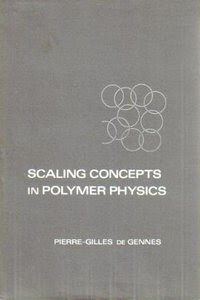Scaling concepts in polymer physics
Publisher: Cornell University Press | ISBN: 080141203X | 1979 | Pages: 324 | djvu | 2.4 MB
The Author points out the three developments which have been essential for recent advances in the study, actually for large-scale conformations and motions of flexible polymers in solutions and melts. They are the advent of neutron-scattering experiments on selectively deuterated molecules; the availability of inelastic scattering of laser light, which allows us to study the cooperative motions of the chains. From this book you can also find an important relationship between polymer statistics and critical phenomena, leading to many simple scaling laws.
Contents of this book are:
Introduction: Long Flexible Chains
Part A
Static Conformations
I Single Chain
II Polymer Melts
III Polymer Solutions in Good Solvents
IV Incompatibility and Segregations
V Polymer Gels
Part B
Dinamics
VI Dynamics of a Single Chain
VII Many-Chain Systems: The Respiration Modes
VIII Entanglement Effects
Part C
Calculation Methods
IX Self-Consistent Fields and Random Phase Approximation
X Relationship between Polymer Statistic and Critical Phenomena
XI An Introduction to Renormalization Group Ideas
Until now, information relating to these advances has not been readily accessible to physical chemists and polymer scientists because of the difficulties in the new theoretical language that has come into use. Professor de Gennes bridges this gap by presenting scaling concepts in terms that will be understandable to students in chemistry and engineering as well as in physics.
doubleclick for free dowload
0 comments:
Post a Comment